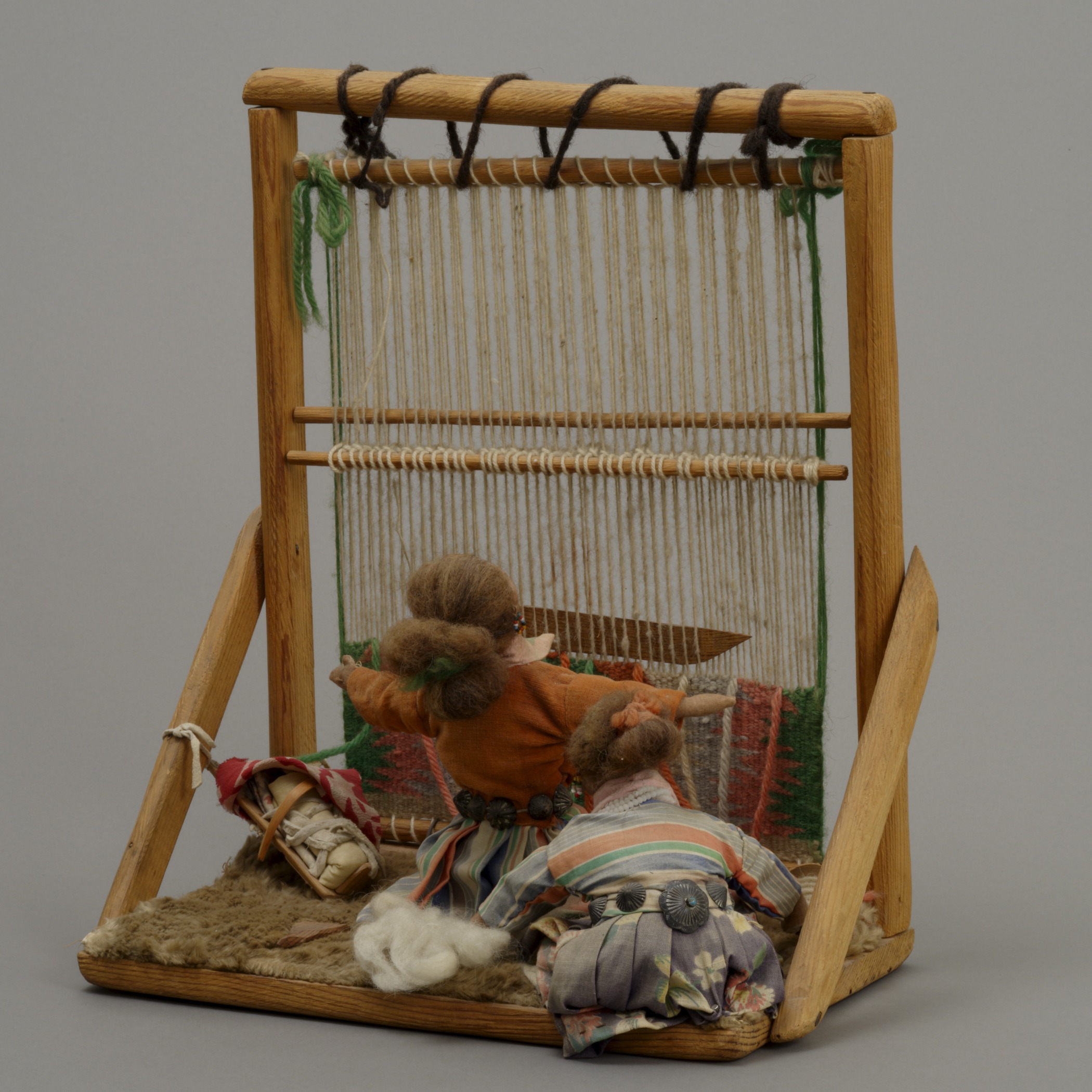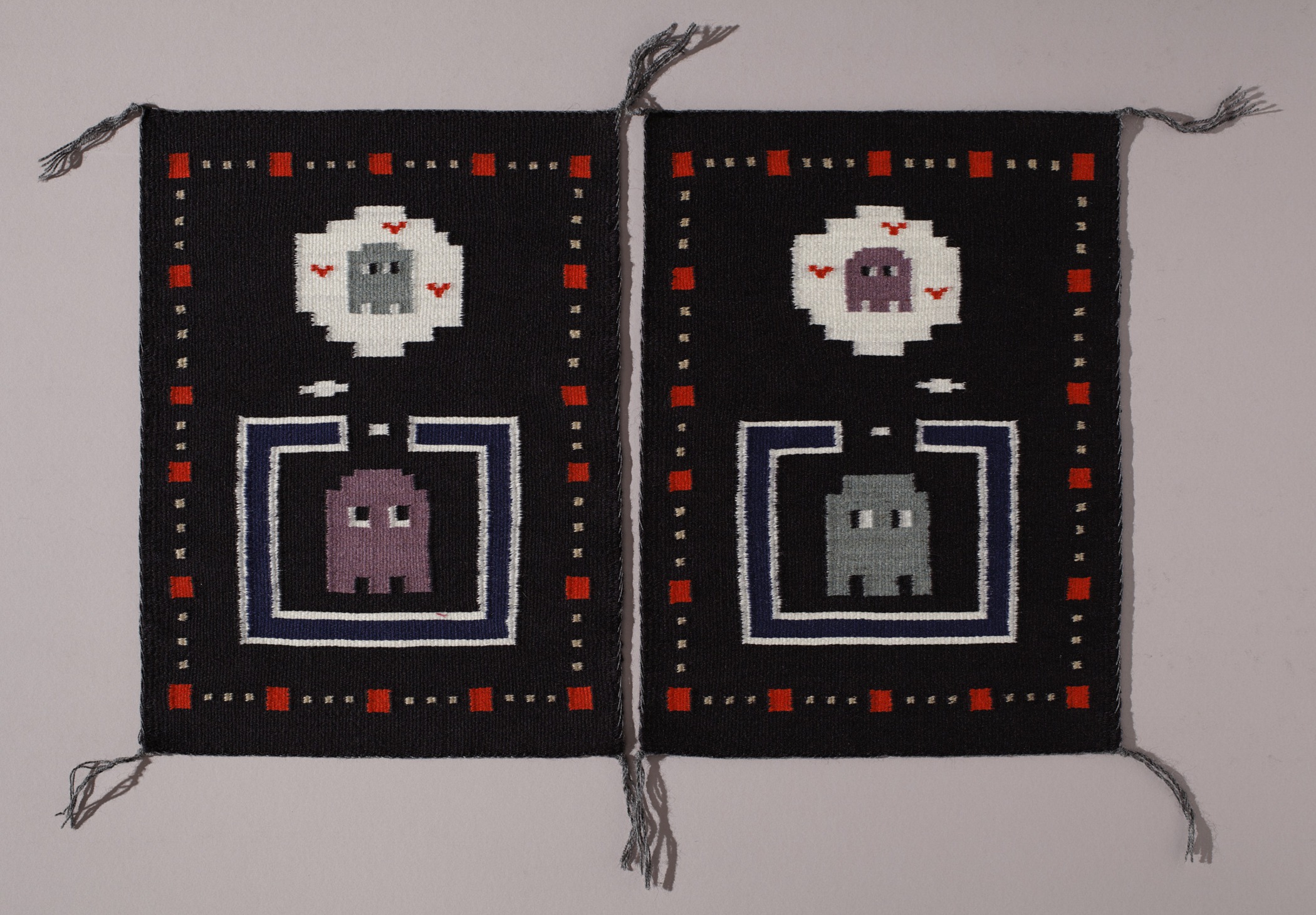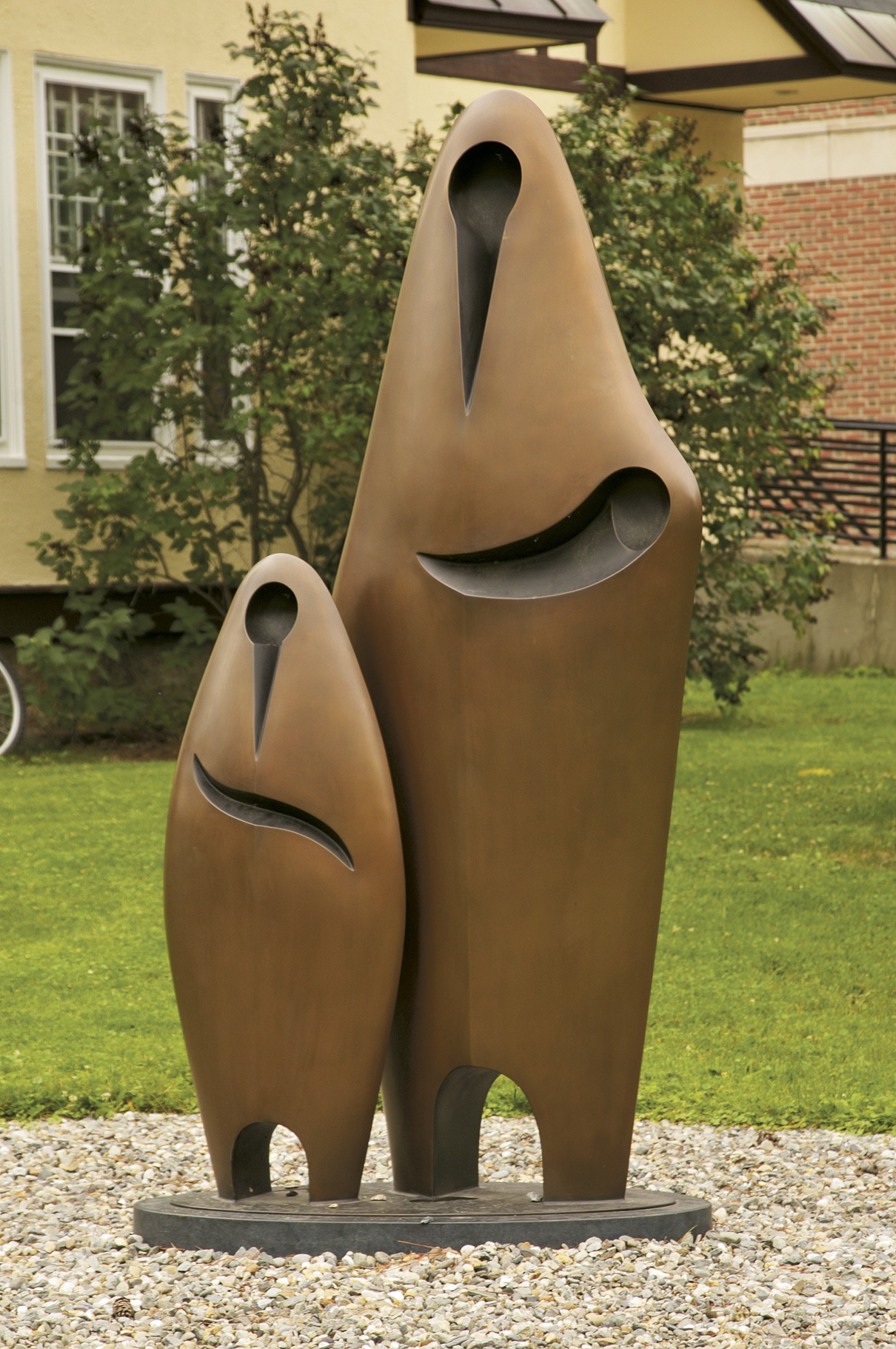Allan C. Houser, American (Chiricahua Apache), 1914–1994
Peaceful Serenity
- 1992
- Bronze plated steel 6/6
- 74 × 36 × 17 in.
Hood Museum of Art, Dartmouth College: Purchased through a gift from Mary Alice Kean Raynolds and David R. W. Raynolds, Class of 1949; 2007.56. © Chiinde LLC
visibilityLook & DiscussWorks of art are often inspired by many sources. Alan Houser’s sculpture is influenced by modern European and American art, the landscape of the Southwest, and the important role of women in Apache culture.
explore the object
This sculpture of a mother and her children celebrates Chiricahua Apache identity and the role of women in Apache culture.
The color and shapes of the sculpture recall the landscape of the southwest with its softly rounded mountains and coppery rock formations.
The forms mimic the type of homes the Apache lived in long ago. A migratory people, they created a type of portable wigwam known as a “gowah” to Apaches and as a “wickiup” to outsiders. The gowah is a domed structure made using a frame of thin poles covered with brush, grass, reeds, mats, or any other organic materials available. Bark and sod kept out the cold. In addition to caring for children and preparing food and clothing, Apache women built the gowah for their families whenever the tribe moved to a new location. Daughters learned these skills from their mothers by observing and copying them.
Henry Moore, Large External Internal Form, on display in Kew Gardens
The sculpture is also modern, influenced by the work of Henry Moore and other contemporary artists. Houser eloquently expresses the love and protection Apache women provide to their families in the simple, abstract forms of this work.
meet the artist
Allan Houser was a painter, sculptor, and teacher. He began drawing and painting as a young man at the Santa Fe Indian School, and quickly received recognition for his work. He had his first solo exhibition at the Museum of New Mexico when he was just 23 years old. He went on to create a new type of art that is bold and monumental and combines indigenous imagery with modern abstract forms. He explained, “What I’m trying to do is make the Indian image more contemporary and more beautiful.” He has created work for the United Nations, the Smithsonian, and many other museums and institutions around the world. He was the first Native American to be awarded the National Medal of Honor. Houser’s son, Bob Haozous, is also an artist. His work is included in the Southwest Histories and Identity section of this website.








